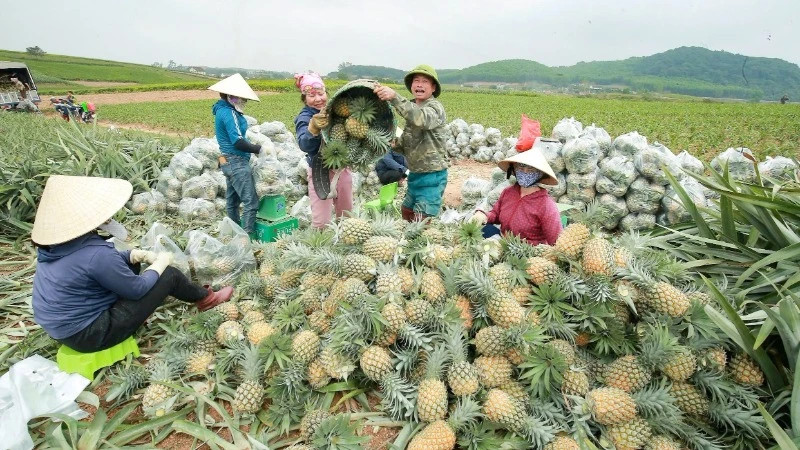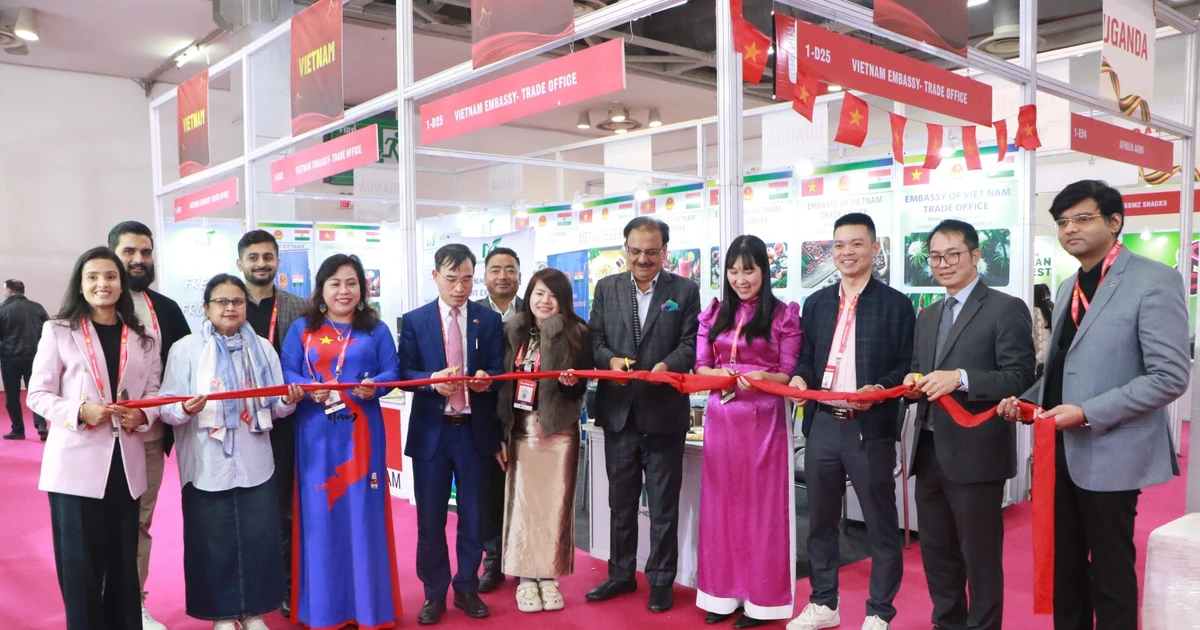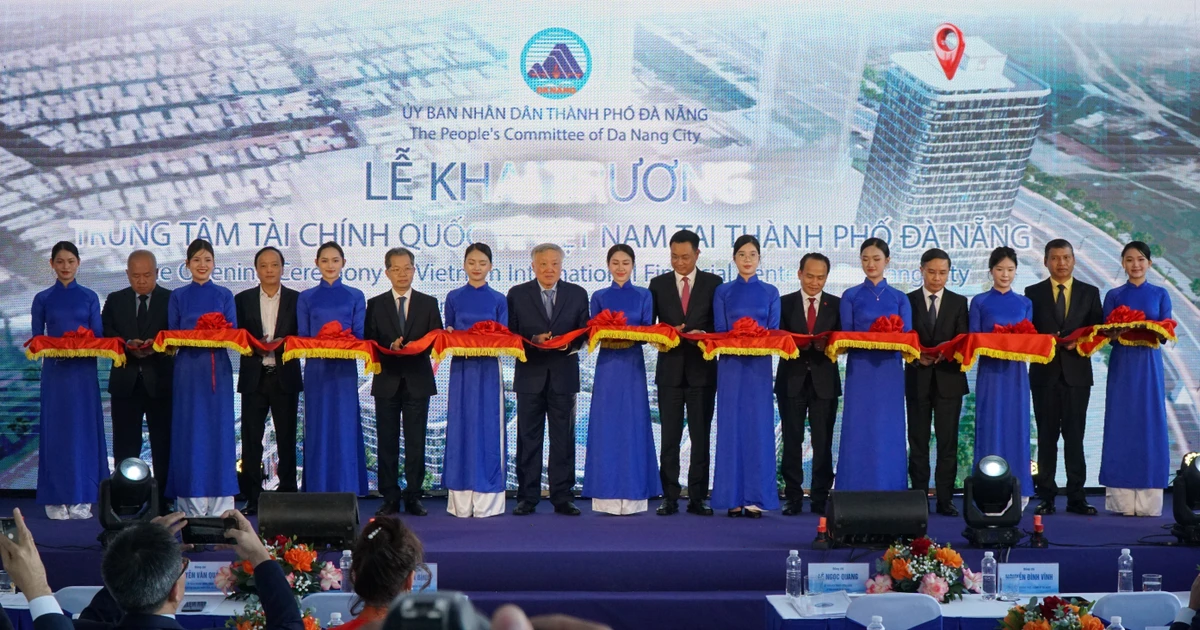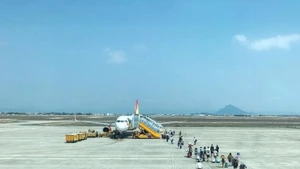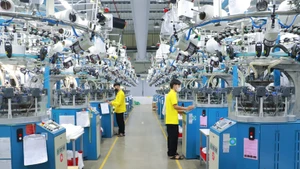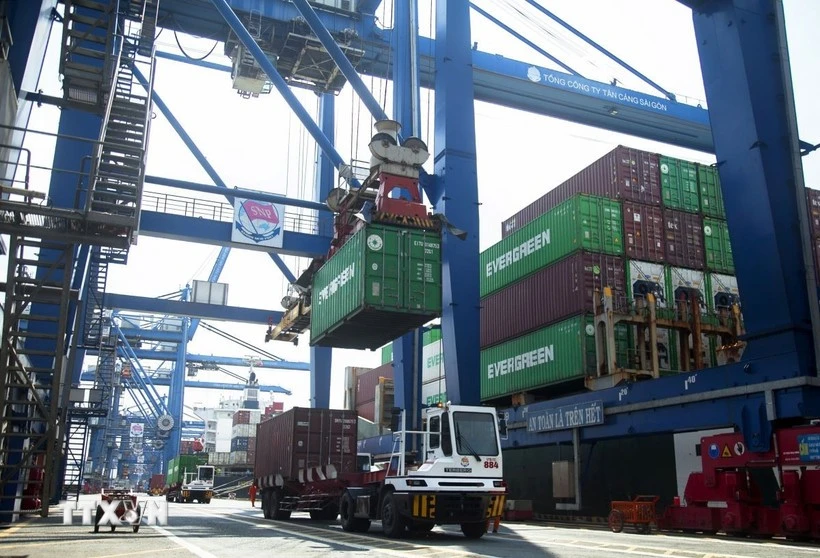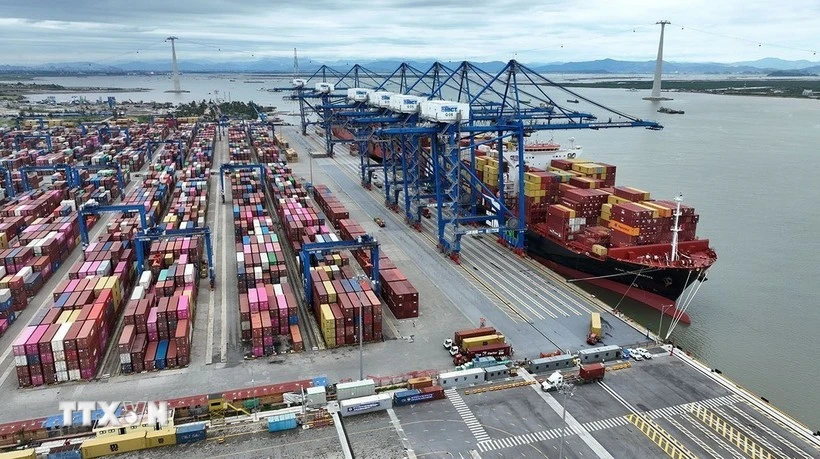No longer at mercy of the market
These days, across the hillsides of Tan Thang commune (Quynh Luu district), farmers are busy harvesting pineapples from early morning. Tan Thang has the largest pineapple-growing area in the province, with 1,432 hectares. The main varieties are Queen, MD2, and Cayenne, with an average yield of around 41 tonnes per hectare.
According to Duong Van Nga, Chairman of Tan Thang Commune People’s Committee, pineapple is the area’s key crop, accounting for over 72% of local agricultural income. Two cooperatives and two limited companies act as focal points for purchasing and distributing the fruit. Participating in this model, farmers must comply with production protocols and quality standards, resulting in increasingly specialised farming. More importantly, thanks to binding contracts, farmers no longer worry about market outlets, can proactively plan their production, while businesses benefit from a stable supply of raw materials.
Currently, MD2 pineapples can fetch up to 15,000 VND per kilogramme. Although some farmers have contracts with fixed prices around 10,000 VND, they still strictly honour the agreements. “If you chase volatile market prices, income is unstable. But with contract farming, prices are steady and companies can plan with confidence,” Nga said.
In Dien Chau district, a potato-growing model under contract is also proving highly effective. Le Van Thuan, Director of Dien Ky Agricultural Cooperative, said that with nine members, the cooperative cultivates five hectares of white potatoes through a contract farming model. Each hectare yields 18–22 tonnes. At 8,000 VND per kilogramme for white potatoes and 8,500 VND per kilogramme for yellow ones, farmers earn about 150 million VND per hectare. For the upcoming crop, the cooperative plans to expand to 15 hectares and develop model fields.
According to the district’s Department of Agriculture and Environment, Dien Chau has over 60 hectares of potatoes, including 32 hectares under contract with Orion Group. This linked farming model began in 2020, when the Nghe An Centre for Technology Application selected several cooperatives to pilot it. The Viet Nam National University of Agriculture provided seeds and technical guidance, while also acting on Orion’s behalf to guarantee purchases. In its first year, the crop yielded high and was bought directly in the field at 7,000 VND per kilogramme, encouraging more cooperatives to join.
While Dien Chau’s farmers grow potatoes and Quynh Luu’s farmers grow pineapples, in Con Cuong, located in the western part of Nghe An, farmers are turning to medicinal herbs. In Chau Khe commune, 57 households in Village September 2 grow about 10 hectares of Ca gai leo (Solanum procumbens), out of the commune’s total 15 hectares of linked cultivation. Compared to other crops, Ca gai leo brings higher and more stable income.
Each year, Pu Mat Medicinal Herb Cooperative grows and purchases around 400 tonnes of raw materials for producing herbal tea bags, instant tea, and herbal extracts. Phan Xuan Dien, Director of Pu Mat Medicinal Herb JSC, said that once their traditional medicine factory is completed, the company will expand contracted growing areas to meet production needs.
Key to sustainable development
Implementing Decree No. 98/2018/ND-CP dated July 5, 2018, the provincial Department of Agriculture and Environment advised the People’s Committee to issue Resolution No. 13/2018/NQ-HDND dated December 12, 2018, encouraging partnerships in production and consumption of agricultural products. Nghe An was one of the first provinces to adopt such policies.
In line with the Prime Minister’s Decision No. 255/QD-TTg dated February 15, 2021, approving the national agricultural restructuring plan for 2021–2025, Nghe An has issued its own restructuring roadmap.
The province aims that by 2025, 30% of the value of its agricultural, forestry, and fishery products will come from linked or cooperative production models—matching the national target.
Alongside policy rollout and resource allocation, Nghe An is actively raising public awareness of the need for value chain-based production. It continues to attract investment in agriculture and foster the development of OCOP (One Commune One Product) items.
As of now, 40 linkage projects involving 40 cooperatives and 21 enterprises have been approved under Decree 98/2018/ND-CP and Resolution 13/2018/NQ-HDND. These cover nearly 4,400 hectares and engage over 16,000 farming households.
According to the provincial Department of Agriculture and Environment, linkages have created many large-scale, centralised production chains. The province now has 278 cooperatives (38.5% of all local agricultural cooperatives), 120 collaborative groups, and 139 farms engaged in contracted production. The proportion of linked-value agricultural output has steadily increased, reaching 27.6% in 2024 (92% of the 2025 target), and is expected to meet the 30% goal by end of 2025.
Deputy Director Vo Thi Nhung noted that both horizontal linkages (among farmers and cooperatives) and vertical ones (between farmers, cooperatives, and enterprises) have made notable progress. However, there are still challenges. It remains difficult to persuade farmers to consolidate land for large-scale farming. Some cooperatives and enterprises face hurdles in land leasing and capital mobilisation. Many cooperatives remain passive, with few engaged in value-added processing and distribution, leading to small scale and low competitiveness.
Most agricultural cooperatives also operate on limited capital. Since support policies are mostly post-investment, cooperatives often struggle to raise funds upfront, resulting in some projects being unable to claim full State support. Furthermore, administrative burdens in documentation and disbursement also persist.
Looking ahead, provincial and central authorities are urged to prioritise funding for current policies and develop new ones suited to today's context. Localities must enhance coordination and communication to effectively implement support programmes. As the two-tier local government model comes into effect, commune-level People’s Committees need to swiftly take on their delegated responsibilities to ensure the rollout of linkage support policies.
Nhung also recommended that agricultural cooperatives proactively reform their structures and operations to align with the 2023 Law on Cooperatives. They should actively build value chains, partner with businesses to expand markets, and strengthen their role in supporting members.
